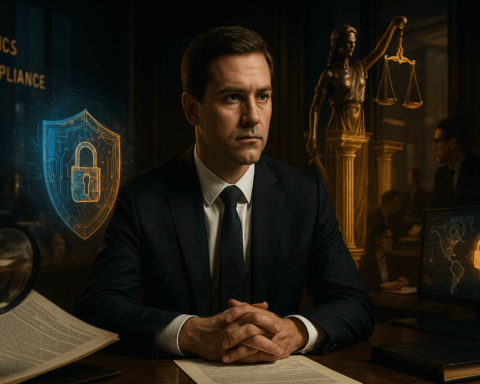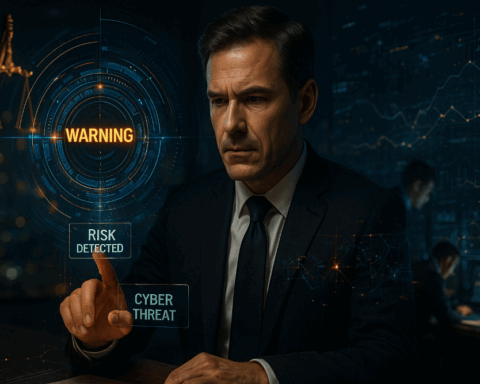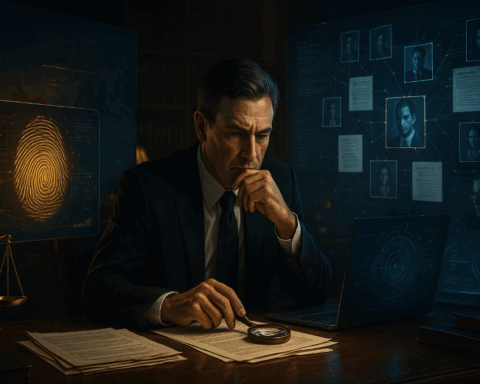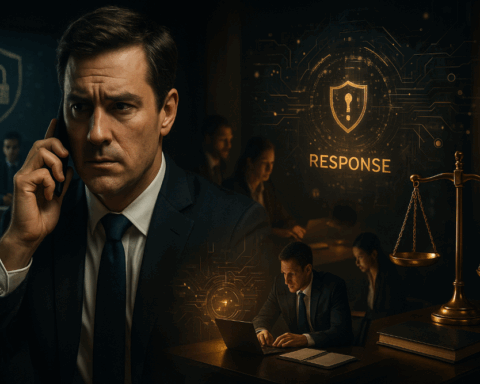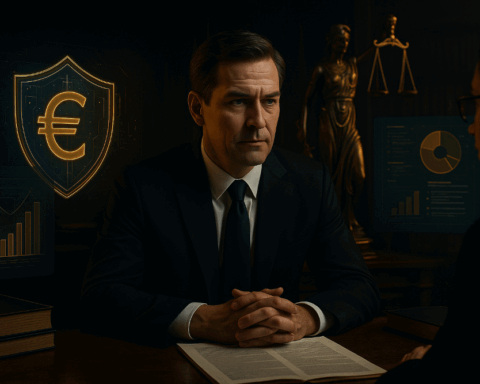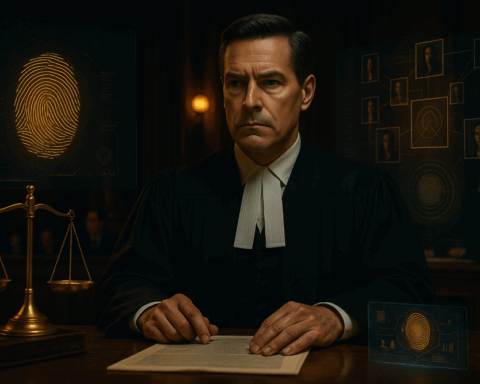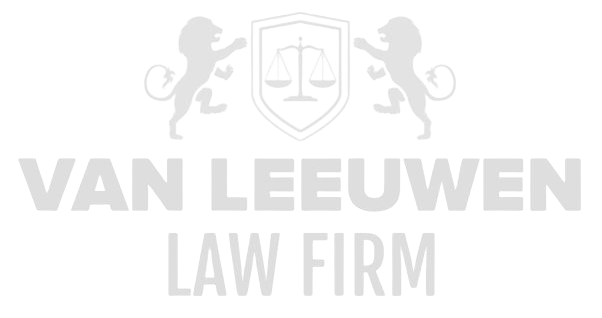At the beating heart of the international business world lies a domain that is as intriguing as it is dangerous: the arena of C-suite executives and corporate crime. This complex legal landscape, inhabited by CEOs, CFOs, COOs, and other top officials, forms a subtle interplay of power, responsibility, legal liability, and moral ambiguity. In this layered reality, one wrong decision, one dubious email, or one moment of negligence can escalate into a legal inferno that threatens not only the individual but also the reputation and continuity of the entire company. It is an environment where the boundaries between strategic decision-making and criminal offenses sometimes prove alarmingly thin. When corruption, money laundering, market manipulation, or accounting fraud enter the picture, the legal world springs into action with a precision reminiscent of a surgical scalpel. The analysis, dissection, and assessment of conduct at the executive level require not only legal expertise but also a profound understanding of the psychological power dynamics in which decisions are made.
C-suite related crime fundamentally differs from the classic crime that passes through the justice system daily. There are no street fights, no ordinary shoplifting or public violence here, but sophisticated financial constructions, shady boardroom decisions, and policy documents that serve as a façade for internal abuse of power. These offenses often have a systemic nature; they arise from a culture of silence, loyalty, and shared interests. Their legal treatment therefore requires a multidimensional approach that goes beyond merely applying the law. Every case must be understood in its entirety: the dynamics within the boardroom, the interests of shareholders, the pressure of quarterly results, and the sometimes cunning entanglement between private interests and business responsibility. In this environment, the law is not just applied but sharpened, continuously challenged, and reinterpreted. The legal professional operating in this field embarks on a path where strategy, psychology, and law must be united with surgical precision.
The Devastating Power of Financial Misconduct
When allegations of financial mismanagement are directed at members of the C-suite, it is not only an individual behavior pattern that is questioned but the integrity of the entire executive apparatus that is scrutinized. Financial mismanagement is not an isolated incident; it is often the culmination of structural shortcomings, inadequate control mechanisms, and a toxic corporate culture that normalizes risky behavior. Detecting such deficiencies requires a forensic eye that takes into account both the content and context of executive decisions. A single careless investment, neglect of prudential standards, or deliberate ignoring of internal warnings can be disastrous for both the continuity of the company and the career of the involved executive. Financial mismanagement acts like a splinter that undermines stakeholder trust and, if not expertly removed, can develop into a festering infection of legal proceedings and public outrage.
The legal process following allegations of financial mismanagement is often intensive, multi-layered, and devastating for those involved. The forensic reconstruction of financial decisions demands a precision mastered by only a few. Every minute, every internal memo, and every financial projection can turn into incriminating evidence. Defense against such allegations therefore requires an in-depth knowledge of financial regulations, corporate governance, and executive liability law. Lawyers venturing into this field must be not only legally proficient but also fluent in the language of balance sheets, cash flows, and risk profiles. In this context, the legal arena is not merely a battlefield but a stage for dissection, analysis, and reinterpretation of executive responsibility.
Moreover, financial mismanagement often leaves traces across multiple jurisdictions, exponentially increasing the legal complications. Multinational companies operate within a mosaic of regulations that may conflict or overlap. This leads to complex situations in which responses must be simultaneously coordinated against demands from regulators, judicial authorities, and civil parties, each with their own standards of evidence, deadlines, and procedural strategies. In such cases, coordination between legal disciplines and international teams is not merely desirable but necessary to build a consistent and credible defense. The absence of a coordinated approach inevitably results in contradictory statements, reputational damage, and legal losses that spread like dominoes through the organization.
Finally, it is essential to recognize that allegations of financial mismanagement are not limited to financial damage alone. The impact on reputation, market share, and investor confidence is at least as severe, if not more so. A single press release about an investigation into financial mismanagement can cause stock price drops, rating downgrades, and capital flight. The markets are merciless and respond not to guilt or innocence but to the perception of risk. In this context, legal defense is also a form of reputation management, where every word must be carefully weighed, every statement a strategic move, and every mistake capable of causing irrevocable damage.
The Insidious Nature of Fraud in Boardrooms
Fraud within the C-suite is rarely a standalone act. It is typically the result of a slow erosion of ethical boundaries, fueled by performance pressure, ego, loyalty to one’s network, and a profound belief in invulnerability. Fraudulent acts at the executive level are sophisticated, deliberate, and often difficult to distinguish from regular business operations. Manipulation of financial reports, artificial profit optimization, hidden losses, or deliberate misleading of regulators are typical manifestations of this white-collar crime. The line between creative accounting and criminal deception is razor-thin, sometimes a matter of interpretation, sometimes a willful choice, but always legally explosive.
Uncovering fraud requires a meticulous reconstruction of decision-making, internal communication, and control processes. This demands not only access to relevant documentation but also a deep analysis of motives, conflicts of interest, and the cultural context within the organization. Often, whistleblowers, internal audits, or external regulators detect the first signals of irregularities. Once these signals reach the outside world, legal resolution becomes a complex choreography of defense strategies, negotiations, internal investigations, and public relations. Lawyers working on these cases must combine surgical precision with strategic insight, psychological sensitivity, and above all: unwavering integrity.
The legal complexity of fraudulent acts within the C-suite is further increased by the fact that those involved rarely act alone. Fraud is seldom the product of a single person but rather a network of implicit approval, active complicity, or strategic ignorance. This makes legal evaluation extra complicated, as the line between principal responsibility, complicity, and negligence is often subjective and dependent on evidence that becomes available only later. Defense in such cases therefore requires a multidimensional approach that considers hierarchical structures, lines of communication, and the plausibility of alternative explanations.
Not infrequently, the legal settlement of C-suite fraud leads to civil proceedings, fines, bans from executive positions, and—in the most severe cases—prison sentences. The legal consequences are far-reaching, but the societal implications may be even greater. Executives become public scapegoats, shareholders demand compensation, and the company faces an exodus of talent and capital. Fraud within the C-suite is therefore not merely a legal case but an institutional crisis requiring a comprehensive legal, strategic, and reputational response. Defense is not simply a legal project but a crisis management operation at the highest level.
The Shadow of Bribery in International Decision-Making
Bribery is one of the most explosive and destructive forms of C-suite crime, with far-reaching legal and geopolitical implications. The payment of kickbacks to foreign officials, facilitating secret deals, or buying political influence not only undermines the legitimacy of the company but also brings it into conflict with national and international legislation such as the Foreign Corrupt Practices Act (FCPA) or the UK Bribery Act. These laws have extraterritorial reach, making executives’ actions outside their home countries legally prosecutable. When such practices come to light, the legal response is not a domestic affair but an internationally coordinated battle for legal recognition, sentence mitigation, and reputation restoration.
The challenge in legally combating bribery cases lies not only in proving or disproving the actual payment but in uncovering intent, context, and involvement. Bribery is often disguised as consultancy contracts, service fees, or sponsorships, with documents legitimizing these payments drafted with care and legal finesse. Defense therefore requires a deep analysis of contracts, correspondence, and financial flows, often supported by forensic accounting experts and international legal teams. The defender operates in a field where every detail matters and where inconsistencies or half-truths serve as ammunition for the prosecution.
International cooperation between regulators and judicial authorities makes defending bribery charges even more complicated. Documentation can be seized in multiple jurisdictions, witnesses heard under different legal regimes, and procedural arrangements in one country may lead to new charges in another. Exceptional coordination and legal acumen are required to draw a coherent and credible defense line within this patchwork of rules. The lawyer functions not only as a legal strategist but also as a crisis manager, diplomat, and spokesperson all in one.
Ultimately, bribery is more than a legal problem; it is an existential risk for the company. Besides criminal sanctions, there are regulatory penalties, exclusion from procurement procedures, clawbacks of subsidies, and reputational damage that can last for years. Legal defense must therefore be accompanied by structural reforms within the company, transparency toward stakeholders, and credible behavioral change. Only then is it possible to survive the legal inferno caused by bribery and gradually restore the company’s reputation.
The Undermining Effect of Money Laundering Schemes
Money laundering is perhaps the most underground and simultaneously most impactful criminal activity within the domain of corporate crime. C-suite executives suspected of involvement in concealing the origin of criminal assets operate at the intersection of international trade, complex financial products, and legal sham constructions. Detecting and legally interpreting money laundering practices requires an almost clinical dissection of transactions, legal entities, and digital traces spread across continents and jurisdictions. The involvement of the C-suite in such schemes points to a deliberately chosen strategy of risk diffusion, exploiting legal gaps, lack of oversight, and deliberate opacity.
The legal approach to money laundering cases against top executives is complicated by the fact that these acts are often presented as regular business activities. Investment vehicles, trust structures, crypto-assets, and offshore entities form a seemingly legitimate network that can only be unraveled with specialized knowledge and intensive cooperation with financial regulators. Defense against such allegations therefore requires an in-depth knowledge of international financial law, tax structures, and digital forensics. Every trail must be followed, every entity analyzed, and every involvement explained in minute detail.
The impact of a money laundering accusation on the company is disastrous. Banks withdraw their support, clients terminate contracts, and regulators impose heavy sanctions, up to and including license revocations. The company loses access to financial markets, and the recovery process demands years of effort, transparency, and legal battles. The C-suite itself is often suspended or dismissed preventively, leading to managerial instability and strategic stagnation. Money laundering is thus not just a legal risk but an existential threat to the company and its management.
Defense against money laundering accusations requires a comprehensive strategy in which legal expertise is combined with technical analysis, reputation management, and international cooperation. Lawyers handling these cases must not only know the law but also master the language of the financial world. They must not only legally defend but also redefine the company’s narrative. Only then is it possible to enter the legal battlefield of money laundering suspicions with a chance of survival, let alone rehabilitation.
The Paralyzing Impact of Corruption on Board Integrity
Corruption at the highest echelons of business strikes directly at the foundation of corporate integrity. When C-suite members are suspected of granting or receiving improper benefits in exchange for business favors, the very essence of ethical governance is undermined. Corrupt acts rarely announce themselves openly; they manifest subtly—in conference invitations, alleged partnerships, or seemingly legitimate commercial agreements. These transactions are often structured with legal precision to withstand scrutiny, and are recognized as corruption only once the full web of interests, communications, and underlying motives is exposed. Legally assessing such actions demands a microscopic focus on context, timing, and the mutual advantage derived from apparently innocent interactions.
The consequences of corruption extend far beyond imposed legal sanctions. When senior executives become associated with corrupt practices, they erode the core of trust that a company maintains with shareholders, customers, suppliers, and regulators. Any hint of corruption acts like a splinter in public opinion and a direct assault on the board’s legitimacy. Internal and external stakeholders begin to question whether decisions served the company’s interests or personal enrichment and reciprocation. Consequently, legal defense becomes not only a battle against the criminal justice system, but an existential effort to restore the company’s moral compass.
Corruption cases often involve a protracted and unpredictable legal trajectory. Evidence rarely sits in one place, and typically consists of indirect indicators: fragmented email chains, unexplained contract clauses, unusual third-party payments, or sudden promotions within the organizational structure. This fragmented evidence demands not only consolidation but also interpretation within the broader picture. Moreover, corruption often intersects with other offenses—false statements, money laundering, or tax evasion—creating a legal hydra that must be fought on multiple fronts. Accordingly, the legal strategy must be adaptive, nuanced, and, above all, anticipatory of parallel proceedings.
The reputational and operational damage wrought by corruption is difficult to quantify but devastating nonetheless. Loss of government contracts, exclusion from international tenders, freezing of grants and investments, and demands for structural reform are merely the tip of the iceberg. The company is forced to scrutinize its entire governance model and implement sweeping changes. For the implicated executives, it often marks an abrupt end to their careers, followed by years of legal battles, personal disgrace, and social exile. In this context, legal defense focuses not merely on acquittal, but on survival—for both the client and the board on which they served.
Market Manipulation: Perverting Transparency and Trust
Market manipulation constitutes a direct assault on the foundations of orderly and fair market functioning. When executives of publicly traded companies engage in practices designed to artificially influence the supply, demand, or price of financial instruments, they not only mislead investors, but also corrode confidence in the entire financial system. Tactics such as disseminating misleading information, deliberately withholding price-sensitive data, or orchestrating transactions to sway market prices qualify as serious offenses with far-reaching legal consequences. Evaluating market manipulation requires a painstaking reconstruction of timelines, knowledge levels, and individual executives’ actions against the backdrop of relevant market developments.
Proving market manipulation in court is an immense challenge. Underlying behaviors are often intertwined with routine corporate communication and reporting processes. Analyst presentations, press releases, internal forecasts, and external shareholder communications may comply in form with regulations while being intended to influence markets to insiders’ advantage. Lawyers must measure their clients’ communications against the standards of care, timeliness, and completeness mandated by financial regulations. Every word, comma, and moment of disclosure is weighed both legally and strategically for its impact and admissibility.
Sanctions for market manipulation are severe. Beyond fines reaching into the millions, executives can face joint and several liability, civil claims, and—in some jurisdictions—criminal prosecution that carries real prison time. Furthermore, regulators such as the AFM, the SEC, or ESMA are increasingly active in detecting and punishing market-distorting conduct, deploying advanced monitoring tools, algorithms, and data analytics to flag suspicious patterns. Defending against market manipulation allegations therefore requires legal acumen, technical expertise, quantitative analysis, and financial-forensic support.
The reputational damage from a market manipulation case runs deep and endures long. The company loses credibility, institutional investors withdraw, and media and politicians pounce on perceived regulatory failure. In the court of public opinion, executives are often deemed guilty before any formal verdict. Thus, the lawyer’s role extends beyond legal defense to narrative redefinition, keeping the client upright in the eye of a public outrage storm. Every strategy must factor in parallel processes of recovery, damage control, and image rehabilitation.
International Sanctions: Legal Minefields for Executive Accountability
The implications of violating international sanctions by C-suite executives extend far beyond criminal law alone. Such breaches raise questions about geopolitical relations, economic stability, and the integrity of the global financial system. When a top executive becomes involved in transactions that violate imposed sanctions regimes—for example, against countries like Iran, Russia, or North Korea—the company immediately finds itself in a legal minefield where national laws, international treaties, and extraterritorial sanction mechanisms overlap. Violating sanctions rules is rarely the result of a mere administrative error; more often, it is a orchestrated attempt at evasion, facilitated by a labyrinth of intermediaries, shell companies, and financial constructions designed to obscure the origin and destination of goods or services.
The legal handling of such sanction violations requires a deep understanding of both substantive sanctions law and the political context in which this regulation originated. Defending a top official accused of sanctions breaches therefore requires more than just knowledge of the facts. It demands interpretative analysis of policy papers, diplomatic correspondence, and often collaboration with international legal experts and diplomatic advisers. The legal debate thus shifts from the traditional courtroom to a hybrid arena where legal, political, and strategic interests converge. In this field of forces, the ability to combine legal argumentation with international sensitivity is essential.
The consequences of sanctions violations should not be underestimated. Financial institutions immediately sever ties with involved parties, governments freeze assets, and regulators launch investigations that lead to multimillion-dollar fines or the revocation of trading licenses. The affected company can quickly be excluded from global financial networks such as SWIFT, severely impairing its operational capacity. Executives face criminal prosecution, and the company sinks into a quagmire of political and legal complications. In this context, a sharp, multidisciplinary defense strategy is not a luxury but an existential necessity.
Moreover, the evidence in sanctions cases often remains obscure. Communication demonstrating that an executive was aware of the prohibited nature of a transaction is rarely explicit. On the contrary, it is indirect signals—unexplained payment routings, unusual contract structures, avoidance of specific countries or currencies—that serve as evidence. In these cases, the defense is primarily about contextualizing, explaining, and reconstructing. Each file becomes a puzzle, in which the picture only fits when all pieces are correctly placed and the executive’s actions are understood within their operational and legal context.
Internal Investigations: The Sword of Damocles over the Boardroom
One of the most underestimated risks for C-suite executives during legal crises is the internal investigation. What begins as a discrete audit or compliance review can develop into a full-fledged forensic investigation into possible misconduct at the top of the organization. Internal investigations are often conducted under the leadership of external law firms, forensic accountants, and risk experts, operating in a vacuum of transparency where the board no longer holds control. On the contrary, the executive is scrutinized, questioned, and analyzed with an unprecedented level of thoroughness. For the involved top official, the internal investigation functions as a quasi-inquisition, where every decision, every email, and every conversation is broken down into legal components subjected to microscopic examination.
The position of the executive during an internal investigation is extremely precarious. They are often obliged to cooperate based on employment contracts or governance rules but simultaneously face the risk of self-incrimination. The boundary between the duty to cooperate and the right to remain silent is razor-thin at this stage, and a misjudgment can lead to legal catastrophes. Lawyers assisting executives in such proceedings must therefore be highly alert to their client’s procedural position, the scope of the investigation, and the dynamics between internal and external parties. It is a delicate game of timing, information control, and strategic positioning, where every step determines the further course of the file.
Internal investigations also have a peculiar characteristic: they are simultaneously an instrument of fact-finding and a weapon in the strategic battle for power and survival. Often, beneath the surface of the investigation lie not only legal questions but also conflicts between shareholders, rival executives, or external regulators. In that respect, the internal investigation is an arena where legal logic mixes with political maneuvers, corporate culture, and personal interests. A top official who insufficiently realizes that they are at the center of this web risks becoming entangled in accusations that no longer require judicial review to be fatal.
Finally, it must be emphasized that the outcomes of internal investigations are often more decisive than a court’s judgment. In practice, they lead to dismissal, reputation destruction, and sometimes even voluntary reports to regulators or prosecutors. Thus, the focus of the legal battle shifts to the pre-legal phase, where facts have not yet been formally established, but the consequences are already irreversible. The lawyer supporting their client in this context must not only plead but anticipate, intervene, and control. It is about steering a narrative before it is formalized—to influence a report that, once published, is hardly contestable.
Liability of Directors in Multi-Layered Governance Structures
In today’s corporate frameworks, board responsibility is no longer confined to the classic trio of CEO, CFO, and COO. International conglomerates, publicly listed holding companies, and cross-border joint ventures operate within governance structures that are layered, complex, and—legally speaking—exceptionally opaque. In such environments, decision-making rarely occurs in splendid isolation. On the contrary, it often takes place within committees, sub-boards, functional bodies, and strategic consultative groups where decisions are formed, evolve, and—crucially—must be legally traced. In this tangle of authorities, responsibilities, and institutionalized ambiguity, it is often nearly impossible for regulators and judicial authorities to clearly delineate individual liability. That is precisely why liability is increasingly constructed, reconstructed, and ultimately concluded based on indirect evidence, presumed knowledge, or alleged negligence.
The legal pitfall lies in the assumption that a director can only be held liable for decisions they explicitly made. In the reality of corporate governance, however, liability can also rest on the failure to intervene, the non-exercise of oversight, or the omission to signal issues. This form of so-called functional liability fundamentally appeals to the concept of responsibility without direct causality, and from a legal perspective, it is a highly potent yet simultaneously dangerous construct. Directors who claim a lack of direct involvement will face the assertion that their position actually obligated them to understand, intervene, and warn—and that the absence of action effectively amounts to a legal act.
In this context, the legal defense of C-suite executives becomes a form of strategic reconstruction of their actual role within the decision-making process. Every agenda item, every minute, every pattern of absence can be used as evidence of involvement—or conversely, of dereliction of duty. The defense must therefore focus on explicitly clarifying the division of responsibilities, the provable limits of authority, and the documentation of professional due care. This requires not only legal substantiation but also a deep understanding of the internal dynamics of board layers, the interactional logic of corporate decision-making, and the formal and informal communication flows within the organization. It is in this context that the director’s lawyer acts simultaneously as archivist, psychologist, strategist, and jurist.
The implications of personal liability in such structures are immense. Not only civil claims for mismanagement but also criminal prosecution for negligence, forgery, or even complicity in economic crimes are among the risks. Furthermore, holding individual directors liable often opens the door to broader prosecution of the company itself, the so-called piercing the corporate veil principle, whereby the actions of the board member are attributed to the legal entity. The defense must therefore not only absolve the individual but simultaneously protect the legal immunity and continuity of the company. A mistaken assessment of this reciprocal dynamic leads to legal escalation with disastrous consequences for both the individual and the organization.
The Mediatization of Legal Processes and Public Judgment
In the current era, legal processes no longer take place solely behind closed courtroom doors. The media—traditional, digital, and social—have evolved into a parallel arena in which questions of guilt are not only discussed but often decided prematurely. When members of the C-suite become the subject of legal accusations, an explosive mix of speculation, image formation, and public condemnation arises that is hardly containable. The speed at which news spreads, the simplification of complex facts into headlines and soundbites, and the moral zeal of opinion leaders mean the involved executive faces not just a judge but an invisible, omnipresent public jury.
This mediatization directly influences the legal process. Judges, regulators, and policymakers are not immune to social pressure and public opinion. A media-friendly case—where terms like fraud, enrichment, tax evasion, or corruption dominate—creates expectations of decisiveness, condemnation, and harsh measures. In that context, legal neutrality is an ideal but not a given. The lawyer must therefore focus not only on facts and evidence but also on narrative management: carefully shaping the public image of the client without resorting to denial, distortion, or escalation of conflict.
This requires an extremely delicate balance. On one hand, the defense must not be held hostage by media pressure—legal silence often remains the best strategy—but on the other hand, total silence can be interpreted as an admission of guilt. In this ambiguous space, the lawyer must act strategically: through controlled statements, position papers, background talks, and if necessary—with surgical precision—a media campaign aimed at nuance, complexity, and repositioning. It is crucial that the defense does not become a pawn of PR firms or marketing strategists but remains an integral part of the legal direction.
The reputational damage arising from a media case is irrevocable. Even after acquittal, the director’s name remains associated with the accusations. Google algorithms know no justice, and public memory is selective. Therefore, defense in the media dimension is at least as important as the formal legal procedure. The lawyer for the C-suite must be aware of this dual battle and not shy away from it but embrace it as part of the modern legal playing field where words can cut as sharply as verdicts.
The Role of Compliance, Ethics, and Governance in Preventive Strategies
In an era where corporate crime increasingly leads to personal prosecution of directors, developing robust compliance programs is no longer optional but a legal requirement. C-suite executives occupy a position where they not only determine operational policy but also represent the moral compass of the company. In that capacity, they bear the duty to ensure a legal and ethical infrastructure that is not merely defensive but actively detects, prevents, and sanctions misconduct. Compliance is no paper tiger but a living system penetrating every fiber of the organization, supported by continuous training, auditing, signaling, and reporting.
Failing to establish or properly maintain such structures is increasingly regarded as negligence. Directors who hide behind alleged ignorance of internal misconduct risk that their lack of oversight, monitoring, or escalation leads to legal accountability. Jurisprudence shows a growing number of rulings interpreting compliance failure as culpa in vigilando—fault through insufficient supervision. In this respect, compliance is not merely an organizational issue but a legal shield that, when absent, fully exposes the director to personal prosecution.
Implementing effective governance requires more than procedures and protocols; it demands ethical leadership and legal awareness at the highest level. The C-suite must realize that every decision, contract, and strategic alliance has the potential to be subjected to legal scrutiny. The preventive aspect of governance—recognizing legal risks early and anticipating them—is the most underestimated yet most effective form of legal self-defense. This requires the structural presence of legal advisors, independent supervisors, and a culture in which dissent is not just tolerated but actively encouraged.
When compliance is seen as a bureaucratic burden rather than a strategic necessity, downfall is near. History teaches that almost every major corporate crime case was preceded by ignored, suppressed, or unrecognized signals. The defense of directors in such cases is significantly complicated when compliance is structurally dysfunctional. Conversely, the presence of an adequate compliance framework can be a crucial factor in the legal assessment of guilt, intent, and responsibility. The law does not require directors to be omniscient but does demand they create an organization where misconduct does not thrive in the shadow of ignorance but dies in the light of vigilance.
Future Perspectives for Legal Protection of the C-Suite
The legal risks associated with top management positions in business will not decrease in coming years but will increase. Calls for personal liability, transparency, and ethical governance are growing louder, sharper, and more relentless. Directors who once operated in gray areas of responsibility will face ever stricter standards, enhanced supervisory mechanisms, and an international landscape where legality and legitimacy are demanded hand in hand. In this climate, legal protection for the C-suite becomes not merely a reactive matter but a proactive discipline in which anticipation, integrity, and strategy merge into a new form of governance artistry.
The role of the lawyer fundamentally changes. They are no longer just the defender in times of crisis but the legal architect of risk reduction. The modern governance lawyer develops scenario analyses, creates legal defense lines before accusations arise, and serves as a moral sounding board in strategic decision-making. They stand beside the director not only in court but also at the boardroom table and during due diligence processes. This shift requires not only legal knowledge but tact, discretion, and the ability to grasp complex governance dynamics.
Moreover, the importance of international coordination grows. Multinationals operate in a legal order shaped by national laws, international treaties, soft law, and the expectations of global stakeholders. Directors must be aware of differences in standards of proof, penalties, and civil liabilities between, for example, the US, the EU, and Asian legal systems. Building a legal defense against cross-border accusations requires a global vision based on cooperation, coordination, and foresight.
Finally, it is necessary that C-suite executives recognize their position exposes them to structural distrust. Every signature, meeting, and strategic decision will sooner or later become part of a file—either as evidence or defense. With this awareness, it is not cynical but realistic to act continually as if their actions will one day be legally judged. Those who understand, internalize, and translate this into preventive action lay the foundation for sustainable immunity. Those unwilling to do so will sooner or later pay the price in courtrooms, media, and the annals of failed leadership.

